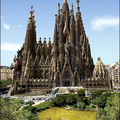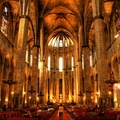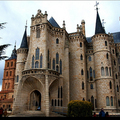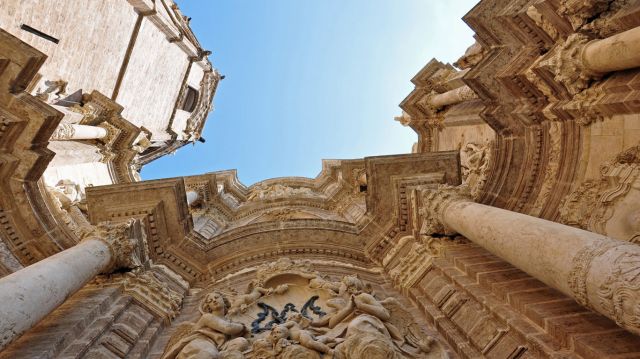Destinations / The most beautiful cathedrals of Spain / Cathedral of Valencia
Ads
Cathedral of Valencia
Sponsored Links
Valencia is the third largest city in Spain and one of the few cities that still preserves among its walls century-old vestiges, along with impressive, futuristic and ingenious buildings. Paella, the festival of Las Fallas –all these words you will often hear in this cosmopolitan and lively city. Located on the eastern coast of Spain, with access to Mediterranean Sea, Valencia was an important port of the Iberian Peninsula, as well as an economic power and a cultural center throughout history.
Cathedral of Valencia is one of the most important Catholic places of worship, where a chalice has been defended as the true Holy Grail - the authentic cup used at the Last Supper, as Vatican sustains. It was also the official cup of many Popes of the Catholic Church, most recently used by Pope Benedict XVI, on July 9, 2006. The chalice dating from the first century was offered to the cathedral by King Alfons el Magnànim in 1436.. And even if it is just a legend, the cathedral attracts countless pilgrims every year.
The construction of this cathedral, located in Place Almoina-Virgen-Reina, began in the thirteenth century by Bishop of Xativa and was completed two centuries later, in the fifteenth century. The cathedral was built on the site where there was a Roman temple in ancient times and then a mosque. The church was consecrated in 1238 by the first bishop of Valencia, Pere d'Albala, and dedicated to Our Lady by order of King James I the Conqueror.
Cathedral of Valencia is an edifice in Gothic style mainly, but eventually became a mixture of styles, as some of its parts were added in subsequent ages, for this reason boasting Romanesque, French Gothic, Renascentine, baroque and neoclassical elements. The three portals are in Romanesque, Gothic and, respectively, Baroque style. The main chapel, Capilla Mayor, is in Baroque style, while the other two side chapels were built in neoclassical style. The bell tower, of octagonal shape, also called Miguelete or Micalet, is a symbol of the city.
All around the main nave there is a series of chapels, in Renaissance or Baroque style. Behind the main nave there are the relics of the martyr Saint Vincent, deacon of Saragoza, tortured and killed by Emperor Diocletian in the fourth century after Christ. The main altar contains a statue of the Virgin Mary from the XVIIIth century, and the two adjacent panels (XVI century) contain each, on the outer side, three biblical scenes. Note that this altar was rebuilt in the nineteenth century replacing the original one, from silver, fused in 1812 to make coins in the war against Napoleon Bonaparte emperor. The main nave dome is decorated with Renaissance frescoes, made by the order of Cardinal Rodrigo Borgia and Valencian congregation in the fifteenth century.
The cathedral has also an impressive, though small museum, which houses a vast collection of art treasures gathered by the church, among which a good collection of paintings and a 2300-kg monstrance made of gold and silver.
Sponsored Links
By Maria Morari
Sponsored Links
Others from The most beautiful cathedrals of Spain
Check out Spain's most sacred destinations!
Images of Cathedral of Valencia, icons, photos, figures, visions, appearances, illustrations, snapshots, captures, canvas and pictures of Cathedral of Valencia - The most beautiful cathedrals of Spain
Sponsored Links
Sponsored Links




































